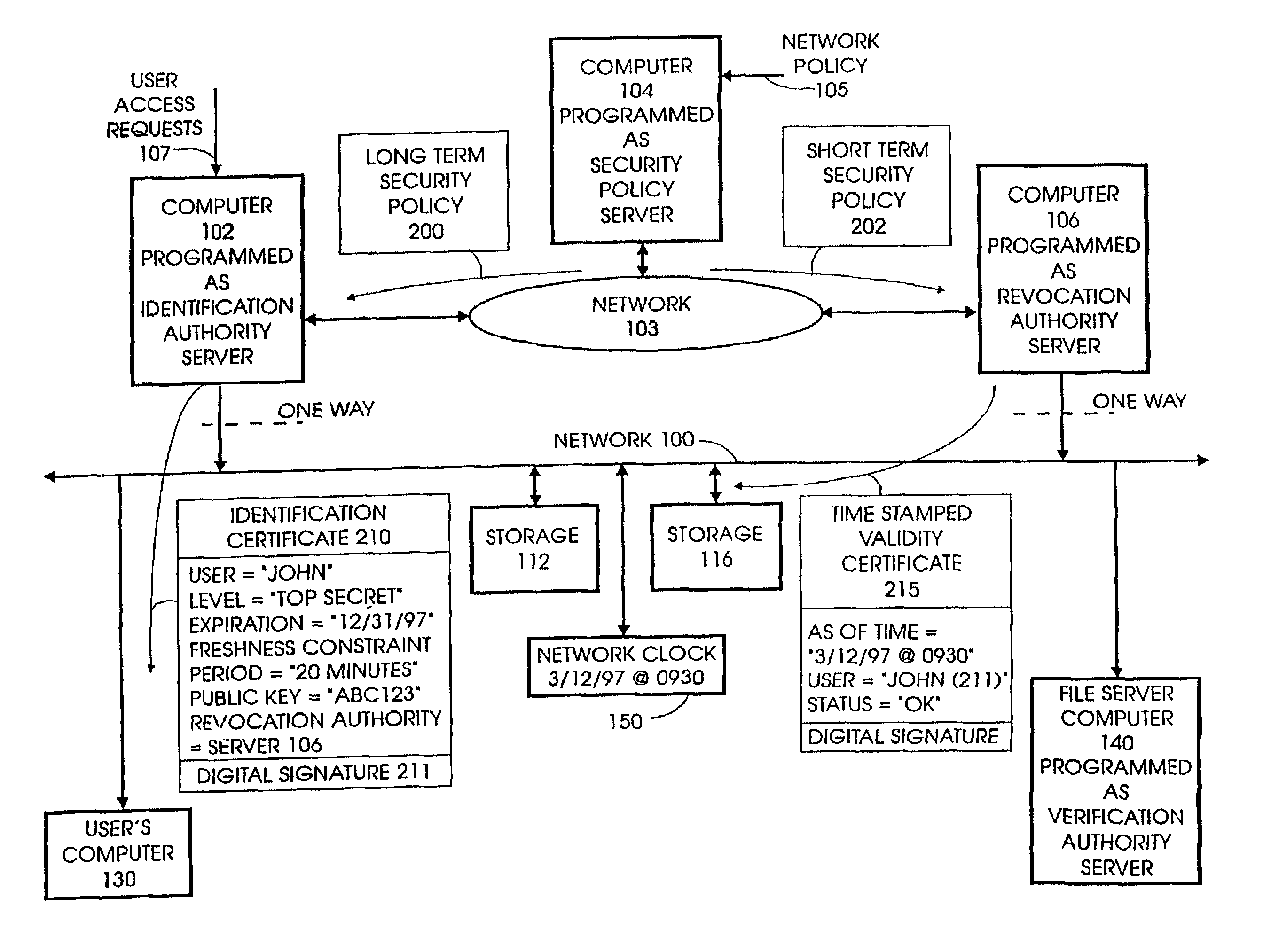Specifying security protocols and policy constraints in distributed systems
a security protocol and policy constraint technology, applied in the direction of securing communication, digital transmission, instruments, etc., can solve the problems of inability to specify the knowledge of the authenticating entity of authentication information, difficulty in revocation in a large distributed environment, and inability to guarantee the integrity of the authentication information. achieve the effect of improving system security
- Summary
- Abstract
- Description
- Claims
- Application Information
AI Technical Summary
Benefits of technology
Problems solved by technology
Method used
Image
Examples
Embodiment Construction
[0059]The concept of specifying security protocols and policy constraints for establishing secure channels in distributed systems will be explained in conjunction with related systems. In particular, recent-secure authentication can be related to a hybrid optimistic / pessimistic method of concurrency control that allows for the selective application of the most efficient method characterized by the probability of conflict. For example, small freshness intervals correspond to a pessimistic method requiring more expensive mechanisms than those required by larger freshness intervals.
[0060]To effect revocation, authenticating entities impose freshness constraints, derived from initial policy assumptions and authentic statements made by trusted intermediaries, on credentials or authenticated statements made by the trusted intermediaries. If freshness constraints are not presented, then the authentication is questionable. By adjusting freshness constraints the delay for certain revocation ...
PUM
 Login to View More
Login to View More Abstract
Description
Claims
Application Information
 Login to View More
Login to View More - R&D
- Intellectual Property
- Life Sciences
- Materials
- Tech Scout
- Unparalleled Data Quality
- Higher Quality Content
- 60% Fewer Hallucinations
Browse by: Latest US Patents, China's latest patents, Technical Efficacy Thesaurus, Application Domain, Technology Topic, Popular Technical Reports.
© 2025 PatSnap. All rights reserved.Legal|Privacy policy|Modern Slavery Act Transparency Statement|Sitemap|About US| Contact US: help@patsnap.com



